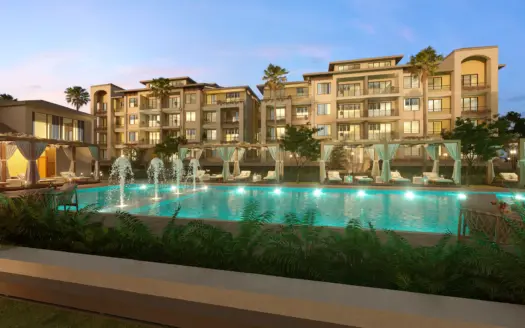Panama’s Infrastructure Boom
Infrastructure Panama – How Foreign Direct Investment Is Shaping the Future of the Isthmus
Panama, the narrow isthmus connecting North and South America, has long been a linchpin of global trade and commerce. Its strategic location, coupled with ambitious infrastructure investments, has transformed the country into a regional powerhouse and a magnet for foreign direct investment (FDI). But as Panama continues to modernize its infrastructure, questions arise about the long-term impact on its economy, real estate market, and social fabric.
The Panama Canal: A Catalyst for Growth
No discussion of Panama’s infrastructure is complete without mentioning the Panama Canal. Since its completion in 1914, the canal has been a cornerstone of global maritime trade, allowing ships to bypass the treacherous Cape Horn route. The 2016 expansion, which introduced Neo-Panamax locks, further solidified the canal’s importance, enabling it to handle larger vessels and increasing its share of global maritime commerce to 6%.
The canal’s success has been a double-edged sword. On one hand, it generates billions in annual revenue, funding critical infrastructure projects and social programs. On the other hand, its reliance on freshwater from Gatun Lake has exposed vulnerabilities, particularly as climate change threatens water availability. The Panama Canal Authority’s investments in water recycling and green technologies are steps in the right direction, but the canal’s long-term sustainability remains a pressing concern.
Transportation: Building Bridges to the Future
Panama’s transportation infrastructure is a testament to its ambition. Tocumen International Airport, the busiest in Central America, has undergone significant expansions, including the addition of Terminal 2, to accommodate growing passenger traffic. Meanwhile, the Panama Metro, the first of its kind in Central America, has revolutionized urban mobility in Panama City, with plans to expand to five lines by 2040.
One of the most anticipated projects is the Fourth Bridge over the Panama Canal, a $1.6 billion endeavor set to open by 2026. This six-lane cable-stayed bridge will span 6.5 kilometers, connecting Panama City with the rapidly growing western suburbs. The project also includes a dedicated metro line, further enhancing connectivity and reducing traffic congestion.
Another key initiative is the Panama Metro Line 3, scheduled for completion in 2025. This 34-kilometer line will extend from Panama City to Panama Oeste, serving over 500,000 residents and significantly reducing commute times. The project, funded in part by a $1.2 billion loan from the Japan International Cooperation Agency (JICA), underscores Panama’s commitment to sustainable urban development.
Ports and Logistics: A Regional Powerhouse
Panama’s ports are among the most advanced in the Americas. The Manzanillo International Terminal, Colón Container Terminal, and Balboa Port handle millions of containers annually, leveraging the country’s strategic location to serve as a transshipment hub for the Western Hemisphere. The Colón Free Zone, the largest free-trade zone in the Americas, further enhances Panama’s appeal, generating billions in re-export revenue.
Looking ahead, Panama is investing heavily in port modernization. The Corozal Port Project, a $1.3 billion initiative, aims to construct a new container terminal on the Pacific side of the canal. Once completed, it will increase the country’s cargo handling capacity by 5 million TEUs (twenty-foot equivalent units) annually, solidifying Panama’s position as a global logistics hub.
Energy and Utilities: Powering Sustainable Growth
Panama’s energy sector is a bright spot in its infrastructure portfolio. With nearly 60% of its electricity coming from hydroelectric power, the country has one of the cleanest energy grids in the region. The Penonomé Wind Farm, Central America’s largest, and a growing number of solar projects underscore Panama’s commitment to renewable energy.
The government’s Energy Transition Plan aims to generate 70% of the country’s electricity from renewable sources by 2050. Key projects include the Chiriquí Grande Solar Park, a 150-megawatt facility set to begin operations in 2026, and the Bayano Wind Farm, which will add 100 megawatts of capacity to the national grid. These initiatives are part of a broader effort to reduce Panama’s carbon footprint and ensure energy security.
Digital Infrastructure: A Hub for Innovation
In the digital age, connectivity is king, and Panama is positioning itself as a regional leader. With one of the highest internet penetration rates in Latin America and a network of submarine fiber-optic cables, the country is a hub for telecommunications and IT services. The National Broadband Network, a $200 million initiative, aims to bring high-speed internet to rural areas, bridging the digital divide and supporting economic development.
Smart city initiatives in Panama City, such as digital public services and smart traffic management, are setting the standard for urban innovation in the region. The Panama Smart City Project, a collaboration between the government and private sector, aims to integrate IoT (Internet of Things) technologies into urban planning, improving efficiency and quality of life for residents.
The Real Estate Boom: A Double-Edged Sword
Panama’s infrastructure investments have had a profound impact on its real estate market. The construction of new highways, metro lines, and bridges has driven up property values, particularly in Panama City and its surrounding areas. Luxury condos, office towers, and mixed-use developments have sprung up to meet demand from foreign investors and expatriates.
One notable project is the Costa del Este Urban Development, a $2.5 billion master-planned community on the outskirts of Panama City. Featuring residential, commercial, and recreational spaces, the development is attracting high-net-worth individuals and multinational corporations. Similarly, the Amador Causeway Redevelopment, a $1 billion project, is transforming the area into a cultural and tourism hub, complete with luxury apartments, marinas, and a convention center.
While this boom has created wealth and opportunities, it has also exacerbated inequality. Rising property prices have made housing unaffordable for many Panamanians, fueling social tensions. To address this, the government has launched the Affordable Housing Program, which aims to build 50,000 low-cost homes by 2030.
Future Projects Requiring Foreign Investment
Panama’s ambitious infrastructure agenda presents numerous opportunities for foreign investors. Here are the top 5 projects where international capital and expertise are needed:
| Project | Estimated Investment | Details |
|---|---|---|
| Fourth Bridge over the Panama Canal | $1.6 billion | A six-lane cable-stayed bridge with a dedicated metro line, connecting Panama City to western suburbs. Set for completion by 2026. |
| Corozal Port Project | $1.3 billion | A new container terminal on the Pacific side of the canal, increasing cargo capacity by 5 million TEUs annually. |
| Panama Metro Line 3 Expansion | $2.6 billion | A 34-kilometer metro line extending from Panama City to Panama Oeste, set for completion in 2025. |
| Chiriquí Grande Solar Park | $200 million | A 150-megawatt solar energy project aimed at boosting renewable energy capacity. |
| Amador Causeway Redevelopment | $1 billion | Transforming the causeway into a cultural and tourism hub with luxury apartments, marinas, and a convention center. |
The Road Ahead: Challenges and Opportunities
Panama’s infrastructure investments have positioned it as a regional leader, but challenges remain. Climate change, water scarcity, and social inequality are pressing issues that require innovative solutions. The government’s commitment to sustainability, as seen in its Energy Transition Plan and green infrastructure projects, is a step in the right direction.
For foreign investors, Panama offers a unique combination of stability, growth, and opportunity. Its infrastructure projects, from the Panama Canal to the Fourth Bridge, are not just feats of engineering but also symbols of the country’s ambition. However, investors must also consider the social and environmental implications of their investments, as sustainable development will be key to Panama’s long-term success.
Infrastructure Panama: A Model for the Region
Panama’s infrastructure story is one of vision, ambition, and resilience. By leveraging its strategic location and investing in world-class infrastructure, the country has become a beacon of progress in Latin America. But as Panama looks to the future, it must address the challenges of inequality, sustainability, and climate change to ensure that its growth benefits all its citizens.
For businesses, investors, and expatriates, Panama remains a land of opportunity. Its infrastructure boom is not just transforming the country but also reshaping the region. As the isthmus continues to bridge continents, it is also building bridges to a brighter, more sustainable future. Reach out to Karen to get more informations.



